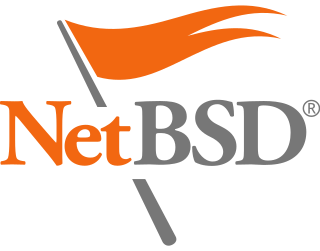The topic of this article may not meet Wikipedia's general notability guideline .(May 2016) (Learn how and when to remove this template message) |
A major contributor to this article appears to have a close connection with its subject.(May 2016) (Learn how and when to remove this template message) |
The Neighbor Discovery Protocol Monitor (NDPMon) is a diagnostic software application used by network administrators for monitoring ICMPv6 packets in Internet Protocol version 6 (IPv6) networks. [1] [2] NDPMon observes the local network for anomalies in the function of nodes using Neighbor Discovery Protocol (NDP) messages, especially during the Stateless Address Autoconfiguration. [3] When an NDP message is flagged, it notifies the administrator by writing to the syslog or by sending an email report. It may also execute a user-defined script. For IPv6, NDPMon is an equivalent of Arpwatch for IPv4, and has similar basic features with added attacks detection. [4]
Internet Protocol version 6 (IPv6) is the most recent version of the Internet Protocol (IP), the communications protocol that provides an identification and location system for computers on networks and routes traffic across the Internet. IPv6 was developed by the Internet Engineering Task Force (IETF) to deal with the long-anticipated problem of IPv4 address exhaustion. IPv6 is intended to replace IPv4. In December 1998, IPv6 became a Draft Standard for the IETF, who subsequently ratified it as an Internet Standard on 14 July 2017.
The Neighbor Discovery Protocol is a protocol in the Internet protocol suite used with Internet Protocol Version 6 (IPv6). It operates at the link layer of the Internet model, and is responsible for gathering various information required for internet communication, including the configuration of local connections and the domain name servers and gateways used to communicate with more distant systems.
In computing, syslog is a standard for message logging. It allows separation of the software that generates messages, the system that stores them, and the software that reports and analyzes them. Each message is labeled with a facility code, indicating the software type generating the message, and assigned a severity level.
Contents
NDPMon runs on Linux distributions, Mac OS X, FreeBSD, NetBSD and OpenBSD. It uses a configuration file containing the expected and valid behavior for nodes and routers on the link. This includes the router addresses (MAC and IP) and the prefixes, flags and parameters announced.

Linux is a family of free and open-source software operating systems based on the Linux kernel, an operating system kernel first released on September 17, 1991 by Linus Torvalds. Linux is typically packaged in a Linux distribution.

FreeBSD is a free and open-source Unix-like operating system descended from the Berkeley Software Distribution (BSD), which was based on Research Unix. The first version of FreeBSD was released in 1993. In 2005, FreeBSD was the most popular open-source BSD operating system, accounting for more than three-quarters of all installed BSD systems.

NetBSD is a free and open-source Unix-like operating system based on the Berkeley Software Distribution (BSD). It was the first open-source BSD descendant officially released after 386BSD was forked. It continues to be actively developed and is available for many platforms, including servers, desktops, handheld devices, and embedded systems.
NDPMon also maintains a list of neighbors on the link and monitors all advertisements and network changes. It permits tracking the usage of cryptographically generated interface identifiers or temporary global addresses when Privacy extensions are enabled.
NDPMon is free software published under the GNU Lesser General Public License version 2.1.

Free software or libre software is computer software distributed under terms that allow users to run the software for any purpose as well as to study, change, and distribute it and any adapted versions. Free software is a matter of liberty, not price: users—individually or in cooperation with computer programmers—are free to do what they want with their copies of a free software regardless of how much is paid to obtain the program. Computer programs are deemed free insofar as they give users ultimate control over the first, thereby allowing them to control what their devices are programmed to do.

The GNU Lesser General Public License (LGPL) is a free-software license published by the Free Software Foundation (FSF). The license allows developers and companies to use and integrate a software component released under the LGPL into their own software without being required by the terms of a strong copyleft license to release the source code of their own components. However, any developer who modifies an LGPL-covered component is required to make their modified version available under the same LGPL license. For proprietary software, code under the LGPL is usually used in the form of a shared library, so that there is a clear separation between the proprietary and LGPL components. The LGPL is primarily used for software libraries, although it is also used by some stand-alone applications.

